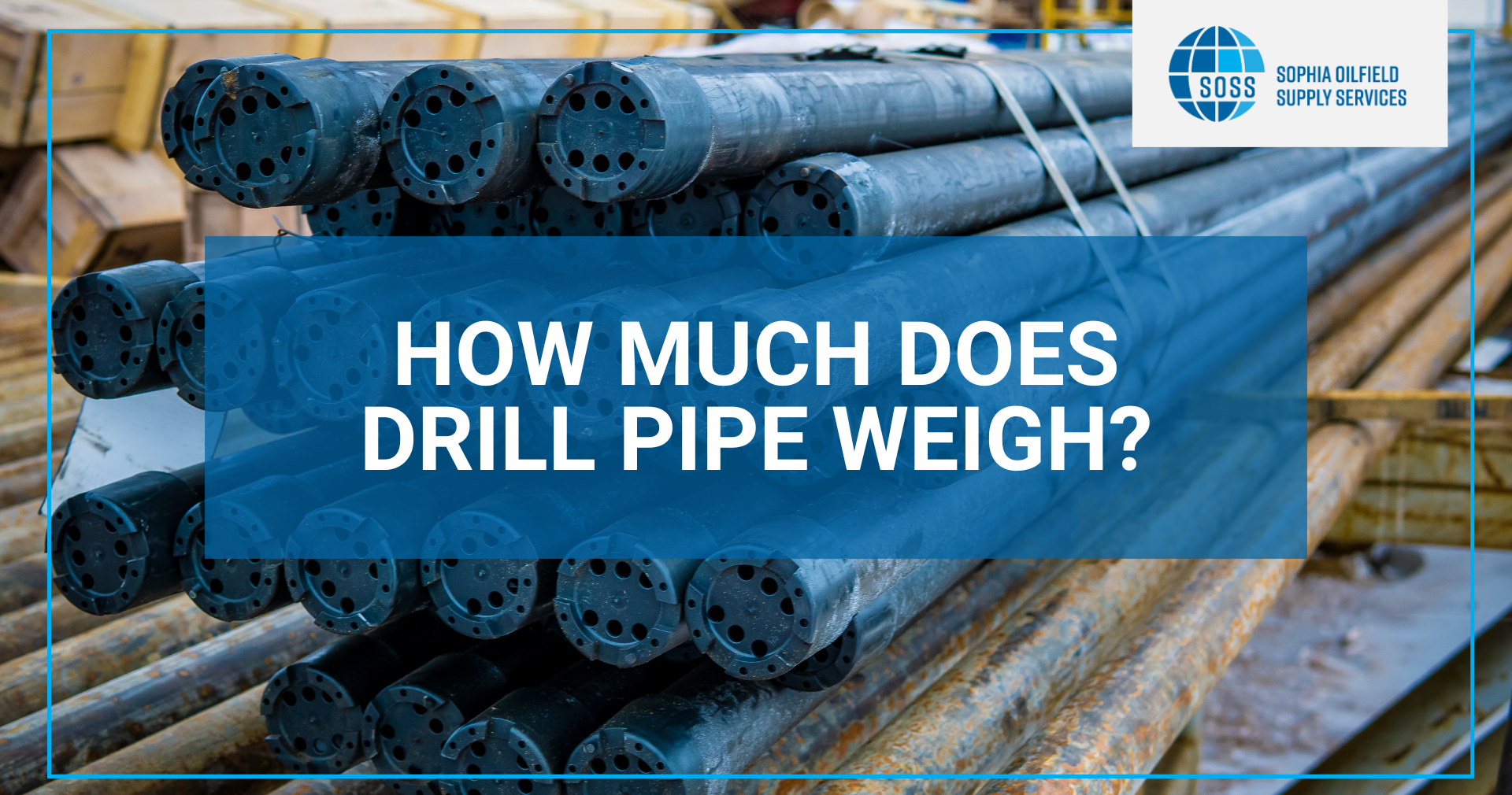Drill pipe plays a crucial role in drilling operations across various industries by aiding in extracting natural resources from the surface, such as oil, gas, and minerals.
Without a drill pipe, drilling operations would be virtually impossible to carry. The hollow, tubular pipe serves as the medium through which drilling fluid is circulated to the drill bit on the drilling rig.
A drill pipe could weigh anywhere between 6 to 43 lbs per foot. Several factors can determine its weight, each contributing to its overall mass and performance characteristics.
Understanding the weight of a drill pipe is essential for various reasons, including equipment selection, safety considerations, and cost implications in drilling operations.
But, before that, it is essential to know some basics about drill pipe first.
Why Drill Pipe Weight Matters?
As mentioned, a drill pipe helps transmit drilling fluid and torque from the surface to the drill bit at the bottom of the borehole. The tool is the primary means of conveying drilling energy and facilitating the removal of rock cuttings during the drilling process.
The pipe forms the backbone of the drill string, connecting the surface drilling equipment to the downhole tools. If the drill pipe is not the right weight, it could jeopardize the entire drilling operation.
The weight of the drill pipe contributes to the downward force exerted on the drill bit, aiding in the penetration of the formation and the efficient transmission of drilling energy. A properly weighted drill string ensures optimal drilling performance and helps maintain drilling stability.
Drill pipe weight influences the selection of drilling tools, including the choice of drilling rigs, top drives, and hoisting systems. It is crucial for ensuring compatibility with the rig’s load capacity and operational requirements.
Average Weights of Drill Pipe
Drill pipe comes in various sizes and grades, each with its unique weight characteristics. The weight of a drill pipe is influenced by factors such as outside diameter, length, wall thickness, material grade, and additional features like tool joints and hardbanding.
Common outer diameters range from 2 3/8 to 6 5/8 inches, with lengths varying based on the drilling requirements. The average outer diameter thickness of drill pipe is about 4 ½ inches.
As a general guideline, drill pipe weights typically range from 6 to 34 lbs per foot, depending on the specifications and configuration. The seamless steel pipe could be anywhere from 30 to 45 feet long, determined by the depth of drilling projects. A heavy weight drill pipe will weigh more per foot than a regular drill pipe as it features walls twice or thrice as thick.
A new drill pipe is typically manufactured to meet specific industry standards and is often heavier due to its pristine condition and higher material integrity.
As drill pipe is subjected to wear and tear during drilling operations, used drill pipe may experience slight weight reductions over time due to factors such as corrosion, abrasion, and material degradation. However, the difference in weight between a new and used drilling pipe is usually minimal and may vary depending on the extent of wear and the maintenance history of the pipe.
Factors Influencing Variations In Weight
Several factors may contribute to variations in drill pipe weight. A drill pipe made from higher-grade steel alloy will be heavier due to its superior mechanical properties. In contrast, a carbon steel pipe will always be lighter than an alloy steel pipe, aluminum pipe, or galvanized steel pipe.
Thicker-walled, heavyweight drill pipe weighs more than a regular, thinner-walled pipe. It has increased strength and durability to bear added pressures in more challenging drilling scenarios.
Different tool joints and connections can add varying amounts of weight to the drill pipe assembly. The heavier the pipe body, the heavier the tool joint will have to be. The pipe fitting has to be just right.
Features such as hardbanding, centralizers, and float valves may increase the overall weight of the drill pipe and the spiral drill collar.
Variations in manufacturing processes and tolerances can lead to slight weight differences between individual drill pipes, even within the same drill pipe size and grade.
Materials Used in Manufacturing
Drill pipe is typically made from high-strength steel alloy to withstand the stresses and rigors of drilling operations.
Common materials used in drill pipe manufacturing include alloy steel grades, such as AISI 4140, AISI 4330, and AISI 4145.
These materials are chosen for their excellent mechanical properties, including high tensile strength, yield strength, and the ability to withstand corrosion and fatigue.
Additionally, a drill pipe may be coated with hardbanding materials to enhance the tensile strength, wear resistance and prolong service life.
Deciphering Drill Pipe Specifications for Optimal Performance
Drill pipe specifications are crucial for drilling success, dictating dimensions, material grade, and performance capabilities. With diameters ranging from 2 3/8 inches to 6 5/8 inches and varying wall thicknesses, different types of drill pipe caters to diverse drilling needs.
Material grades like G-105, S-135, or V-150 determine durability and corrosion resistance, while thread types ensure proper assembly and torque transmission.
Performance specifications, such as tensile and yield strength, indicate a pipe’s capacity to withstand harsh, challenging conditions.
Optional features like hardbanding and coatings enhance longevity, and adherence to industry standards like API and ISO ensures reliability.
Understanding drill pipe specification empowers drilling professionals to make informed choices, optimizing efficiency, safety, and overall drilling success.

